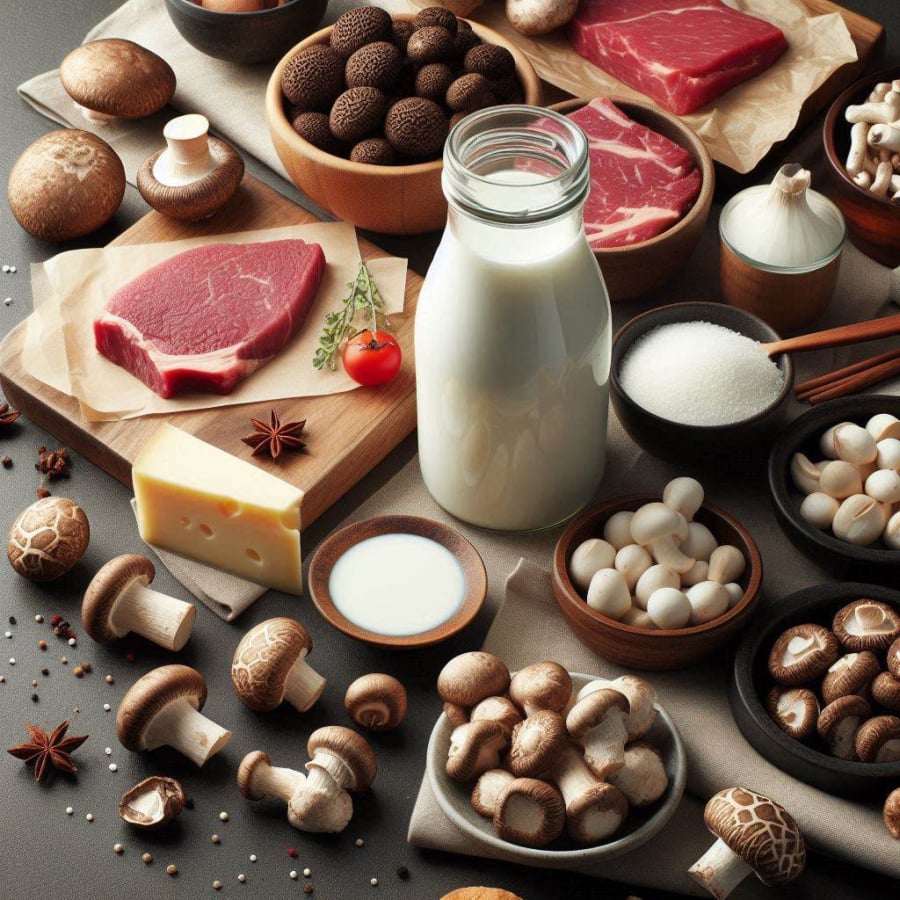In today’s society, with advancements in living standards and nutrition, more and more children are experiencing rapid physical growth and height development compared to their peers. Recently, a 12-year-old girl from Guangxi, China, has attracted public attention due to her impressive height of 5’7″ (1.70 m).
Many parents are curious about how this young girl achieved such remarkable height development. Pediatricians emphasize that a healthy diet and proper nutrition play a crucial role in a child’s height growth. In particular, certain foods are considered “height-boosting superfoods.” Eating these foods can effectively promote growth and development.
What is the ideal time for children’s height development?
Infancy and Early Childhood
This is the period when children grow most rapidly, especially from birth to the age of one. During this time, the average height gain is approximately 20 inches (50 cm). By the time a child turns one year old, their height can reach around 30-31 inches (75-76 cm), indicating a potential height increase of up to 10 inches (25 cm) within the first year.
Puberty
Typically, girls enter this stage between the ages of 9 and 10, while boys usually start at 11 to 12 years old. This is considered the second-fastest growth period in an individual’s life. Girls can expect to grow about 3 inches (8 cm) in a year, while boys may achieve a height increase of up to 4 inches (10 cm) if their development is favorable.

Girls typically enter puberty between the ages of 9 and 10.
4 factors that influence children’s height
Digestive System
Digestive function is crucial for the body’s absorption of nutrients. If a child experiences digestive issues, their nutrient absorption will be affected, potentially leading to calcium deficiency—an essential element for height development. Children’s digestive systems are typically immature and prone to problems like constipation or diarrhea. Moreover, some children may prefer snacking over regular meals, which can exacerbate digestive difficulties.
Genetics
A child’s height is also influenced by genetic factors. If parents are tall, their children are likely to inherit these advantages. Conversely, if parents have average or shorter heights, their children may face challenges in achieving taller stature.
Nutrition
Childhood is a period of rapid bodily development, and adequate nutrition is vital. Children need a balanced diet that includes sufficient protein, vitamins, and minerals. Calcium, vitamin D, and protein are especially important for bone development and height increase.
Lifestyle Habits
Lifestyle habits are another critical factor in a child’s height development. Adequate sleep is essential for growth and development, as it allows the body to recover and grow. Additionally, moderate physical activity has a positive impact on height growth.
In the case of the aforementioned young girl, doctors have highlighted that there are three types of foods that, when consumed in moderation, can support optimal height development.

Lifestyle habits play a crucial role in a child’s height development.
3 types of foods containing essential nutrients for height growth
Milk
There are various types of milk available in the market. Pure milk, when consumed, can stimulate intestinal motility, enhance calcium absorption, and help prevent bone deformation issues.
For optimal height development, ensuring sufficient daily calcium intake is essential. While milk is highly nutritious, children should avoid drinking it on an empty stomach, as it may negatively affect digestion. Additionally, if a child is allergic to milk protein, suitable alternatives should be considered.
Meat
For children in their rapid growth phase, meat consumption is vital for holistic development. For example, beef helps nourish the digestive system and strengthens bones and muscles, especially in underweight and anemic children.
In addition to beef, meats such as chicken, pork, and lamb are also excellent nutritional choices. However, parents should be mindful of portion sizes to prevent childhood obesity.
Shiitake Mushrooms
For children with limited height growth, vitamin D supplementation is crucial. Shiitake mushrooms are an excellent source of vitamin D, along with calcium, phosphorus, iron, and various other minerals. The iron content in shiitake mushrooms is eight times higher than that of spinach.
In addition to dietary intake, children should also get ample sunlight exposure. The UV rays from sunlight enable the body to synthesize vitamin D, aiding in calcium absorption and, consequently, promoting height growth.

Sunlight exposure helps the body synthesize vitamin D.
3 essential habits to promote height growth in children
Ensure your child gets enough sleep
Sleep is critical for a child’s height development. Growth hormones are most actively secreted during deep sleep. The optimal time for this hormone production is between 11 PM and 2 AM and 5 AM to 7 AM. Therefore, ensuring your child gets sufficient sleep during these hours is vital for maximum height growth.
Supplement with Micronutrients and Vitamins
Micronutrients and vitamins play a significant role in a child’s physical development. Zinc deficiency, for example, can lead to loss of appetite, while a lack of iron and copper will negatively impact overall growth and development. Many vitamins also boost immunity, enhance overall health, and promote healthy sleep in children.
Encourage Outdoor Sports and Activities
Physical activity has a positive impact on children’s health and energy levels. Parents can encourage their children to participate in various outdoor activities to increase their movement. This not only stimulates appetite but also improves sleep quality, boosts immunity, enhances mood, and promotes holistic development. However, it is essential to include rest periods for muscle relaxation and proper hydration after sports or strenuous activities.
Why Do Duck Eggs Have White and Blue Shells? Which One is Better?
When purchasing duck eggs, you’ll notice two distinct varieties: those with green shells and those with white shells. It’s only natural to wonder why this difference exists and which type is superior. So, which one should you opt for? Are green-shelled duck eggs better, or do their white-shelled counterparts hold more nutritional value?






































